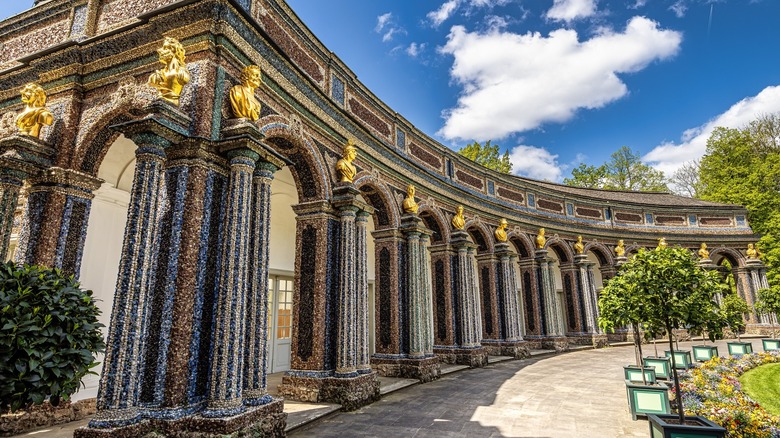Uncover A Thriving Music Scene, Storied Streets, And Lush Parks At An Underrated German Town
Fans of the dense and comprehensive opera masterworks of composer Richard Wagner will find much to love in a city where he lived and built his own festival hall for patrons of the arts to enjoy his compositions. Bayreuth, with its 'Festspielhaus' (Festspielhügel 1-2) — built at the behest of Wagner — celebrates the composer's music annually with its summer opera festival from the last week of July through the end of August. But Wagner isn't the only reason music lovers and seekers of beautiful UNESCO World Heritage sites in Germany might want to set their sights on Bayreuth.
The stunning Margravial Opera House (Opernstraße 14), built for the Prussian princess Margravine Wilhelmine of Brandenburg-Bayreuth, has its own program of classical music (note: it's closed for renovations in 2024 – 2025), as well as a UNESCO status because of the grandeur of its preserved Baroque style. The stunning gardens outside the royal palace, called the Hermitage (Eremitage 1), are another contribution commissioned by Princess Wilhelmine, and remain a lush landscape enjoyed daily by visitors.
Bayreuth, a German town of almost 75,000 in northern Bavaria, is less than 60 miles from the Czech border and only an hour by train from Nuremberg, its closest city with an international airport. Yet many tourists overlook it, opting instead to visit Germany's "Venice of the North" or see the dance between French and German cultures on the other side of the country. But with its location at the midpoint between Berlin and Munich, Bayreuth offers a unique historical and cultural addition to any comprehensive tour of Germany.
Historical and contemporary art harmonize in the streets
As the sister of powerful Prussian leader Frederick the Great, Wilhelmine had intended to marry the King of England, and trained accordingly. She mastered languages, practiced music and composition, and learned social elegance from aristocrats in the French court. But when that plan fell through and she was married to the prince of small-town Bayreuth instead, she didn't let it stop her from bringing her cultural influence and pizzazz to the town, establishing the opera house and the repertoire of elevated musical taste that still exists today.
Visit the Margravial Opera House, Hermitage gardens, and the New Palace of Bayreuth (Ludwigstraße 21), which illustrate the Bayreuth rococo style favored by Wilhelmina. Her bombastic Baroque Italian influences, which reach their finest expression in the complex gilded ceilings of the palace, give some idea of the princess' passion for the arts of the mid-1700s. The city's contemporary art collection, which includes a city-wide, open-air sculpture, mural, and street art collection with 35 points of interest, shows that Wilhelmina's influence still endures, even though times and styles have certainly changed.
Nature and the outdoors come alive in the city's parks
Besides the elegant Hermitage and the park outside the New Palace of Wilhelmina's era, the princess contributed other impressive gardens and natural sanctuaries for her aristocratic friends that can now be enjoyed by the public. Wilhelminenaue (Äußere Badstraße), a state garden that's only been open to the public since 2017, is a nature preserve on the east end of the city. It runs along both sides of the Red Main, the city's main river, and serves as a meadow and park that's open daily. Sporting facilities, a beer garden, and events run seasonally. Sanspareil (Haus Nr. 29, Wonsees) – meaning, "without equal" – was how Wilhelmina felt about nature's ability to design beauty. The rock garden at the entrance to Castle Zwernitz, about 20 miles from Bayreuth, is the cherry on top to any visit of the city.
For Richard Wagner fans, the festival park outside his Festspielhaus features a dramatic spring bloom of flowers in the springtime, and it sets the scene for the outdoor performances of the Richard Wagner Festival in August. Visitors can access the park for free, year-round. And finally, a petting zoo is located next to Röhrensee (Pottensteinerstraße), the local lake. Around the lake itself is a natural wildlife habitat, and the area is open-access, year-round. But families who want to make an appointment to see the animals at the petting zoo should send an email to contact the park's zookeepers ahead of time, at stadtgartenamt(at)stadt.bayreuth.de.


